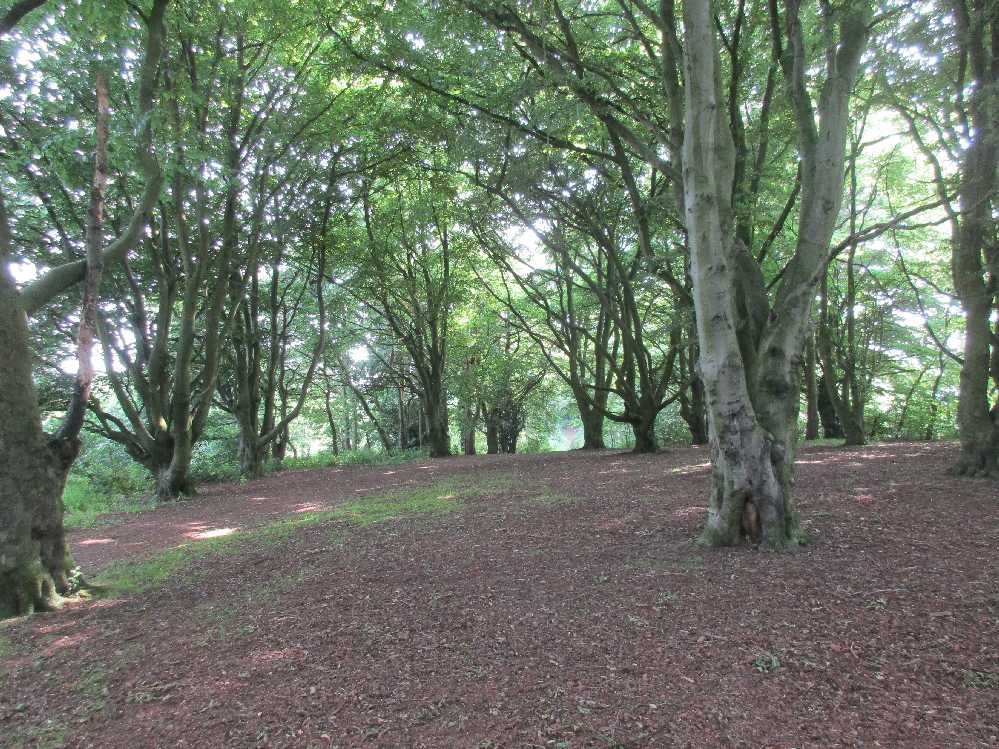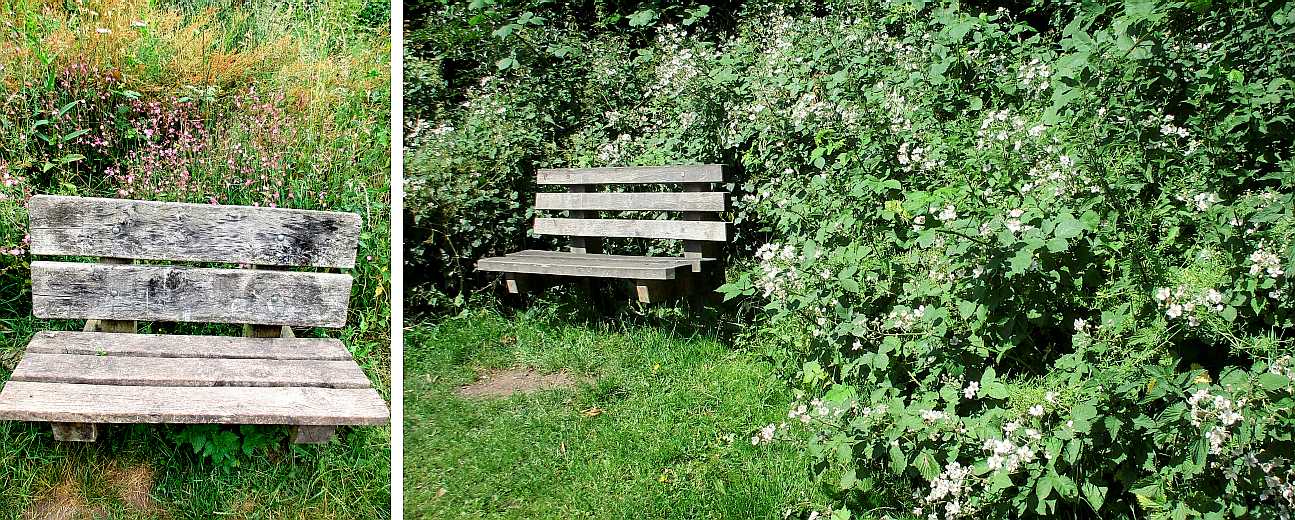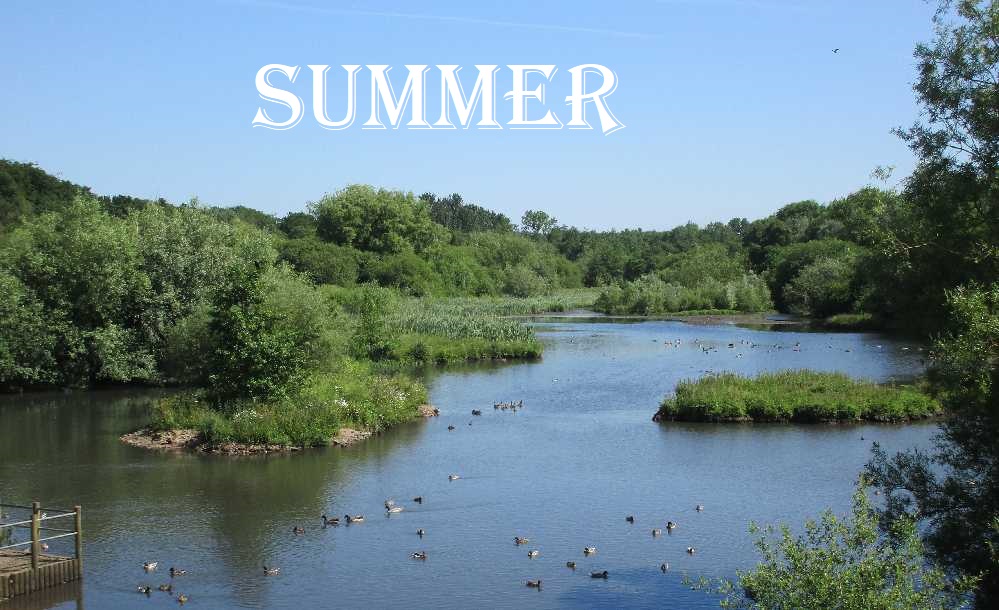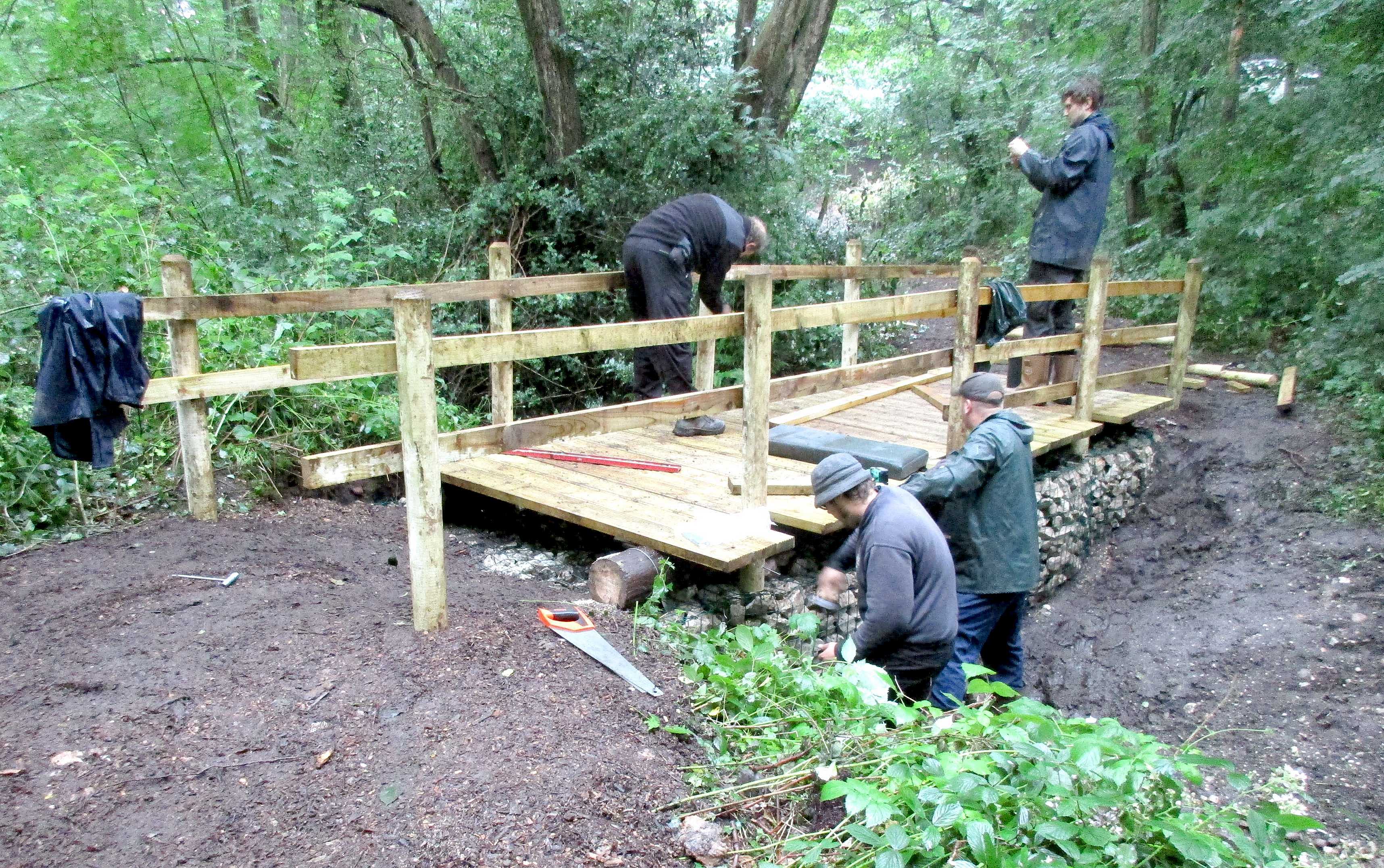To summarise(!) in a single word what happens in summertime that word would have to be "growth". Mother Nature has got all the new stuff initiated during the spring - new twigs on every tree; eggs laid, hatched and babies fledged; rosettes and spikes of fresh new leaves everywhere. Now the object of the exercise is to make use of all that maximal warmth and sunlight to build up strength in size or in numbers and to accumulate reserves ready for autumn storage.
So there's a full canopy of green leaves, all converting that light and waste carbon dioxide into sugars which are then used to build up proteins, cellulose, vitamins and everything else that living things need.

So looking straight up in mature woodlands, not much of the sky is visible since those leaves are capturing the light before it can reach the woodland floor. These are views in ash, beech and oak sections of our woodlands.

Indeed, under our largest beech trees the shade is so dense that nothing needing light can survive: there is no ground flora.

But it's all OK - it has been planned for. The bluebells in the oak wood for example got there early and made best use of the increasing sunlight with their springtime leaves and flowers: they can now form some seeds and then die down until next year. (Those whitish patches are sunlight from penetrating shafts.)
Similarly, the modest yellow flowers of the wood avens are, in June, developing seeds with hooks which are hardening as they ripen, ready to catch in your fur if you have any or your clothes if you haven't, all designed to spread those seeds over a bigger area.

Much forestry work is best undertaken during the autumn or winter months. But infrastructure maintenance and developments are more happily put in hand during the summer months. Some fencing is installed by skilled members of Council field staff, while specialist contractors may be called in for more major developments.

Summer walk options for those without fur (and our dogs) give a choice of shady, possibly pleasantly cool forest paths through beechwood or among the oaks, or open areas for when it is sensible to enjoy the blue sky and sunshine.


There can always be a case for a more restful interlude. At appropriate times the seats may constitute flowery bowers, even if the flowers are only brambles. And if it's oppressively hot flowing water provides an optimal option. The Ridings Brook flows all summer.

There used to be a bridge affording a connection between the unpaved woodland walk, across a minor stream, down to the official bridge over the main Ridings Brook, but it was washed away during a flood event some years ago. 2017 was deemed to be the appropriate time for the installation of a replacement. Preparations were made in June, with essential materials delivered on-site, approximately. Staff and volunteers set to work preparing foundations and abutments.

The high point of the project came about on the 28th of that month, when a carefully planned military intervention combined with all available staff to span the mini-canyon by the end of the day - a damp and not very summery day as it turned out.



 Indeed, under our largest beech trees the shade is so dense that nothing needing light can survive: there is no ground flora.
Indeed, under our largest beech trees the shade is so dense that nothing needing light can survive: there is no ground flora.
 Much forestry work is best undertaken during the autumn or winter months. But infrastructure maintenance and developments are more happily put in hand during the summer months. Some fencing is installed by skilled members of Council field staff, while specialist contractors may be called in for more major developments.
Much forestry work is best undertaken during the autumn or winter months. But infrastructure maintenance and developments are more happily put in hand during the summer months. Some fencing is installed by skilled members of Council field staff, while specialist contractors may be called in for more major developments. Summer walk options for those without fur (and our dogs) give a choice of shady, possibly pleasantly cool forest paths through beechwood or among the oaks, or open areas for when it is sensible to enjoy the blue sky and sunshine.
Summer walk options for those without fur (and our dogs) give a choice of shady, possibly pleasantly cool forest paths through beechwood or among the oaks, or open areas for when it is sensible to enjoy the blue sky and sunshine.
 There can always be a case for a more restful interlude. At appropriate times the seats may constitute flowery bowers, even if the flowers are only brambles. And if it's oppressively hot flowing water provides an optimal option. The Ridings Brook flows all summer.
There can always be a case for a more restful interlude. At appropriate times the seats may constitute flowery bowers, even if the flowers are only brambles. And if it's oppressively hot flowing water provides an optimal option. The Ridings Brook flows all summer. There used to be a bridge affording a connection between the unpaved woodland walk, across a minor stream, down to the official bridge over the main Ridings Brook, but it was washed away during a flood event some years ago. 2017 was deemed to be the appropriate time for the installation of a replacement. Preparations were made in June, with essential materials delivered on-site, approximately. Staff and volunteers set to work preparing foundations and abutments.
There used to be a bridge affording a connection between the unpaved woodland walk, across a minor stream, down to the official bridge over the main Ridings Brook, but it was washed away during a flood event some years ago. 2017 was deemed to be the appropriate time for the installation of a replacement. Preparations were made in June, with essential materials delivered on-site, approximately. Staff and volunteers set to work preparing foundations and abutments. The high point of the project came about on the 28th of that month, when a carefully planned military intervention combined with all available staff to span the mini-canyon by the end of the day - a damp and not very summery day as it turned out.
The high point of the project came about on the 28th of that month, when a carefully planned military intervention combined with all available staff to span the mini-canyon by the end of the day - a damp and not very summery day as it turned out.
